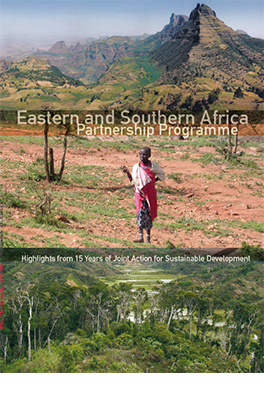Highlights from 15 Years of Joint Action for Sustainable Development

The Eastern and Southern Africa Partnership Programme (ESAPP) was launched in 1999 and concluded in 2015. This publication summarizes experiences and knowledge gained from 15 years of partnership-based research and action in Africa. It presents highlights selected from over 300 projects carried out in Madagascar, Mozambique, Tanzania, Kenya, Ethiopia, and Eritrea.
Citation: Ehrensperger A, Ott C, Wiesmann U, editors. Eastern and Southern Africa Partnership Programme: Highlights from 15 Years of Join Action for Sustainable Development. Bern, Switzerland: Centre for Development and Environment (CDE), University of Bern, with Bern Open Publishing (BOP). DOI: 10.7892/boris.72023